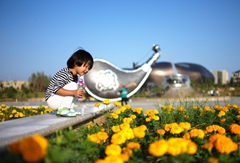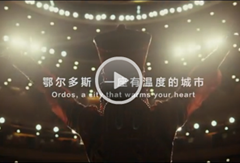Kangbashi
Updated: 2020-04-30  Print
Print 



Hia'bagx (Kangbashi) literally translates to "excellent teacher" in Mongolian. Kangbashi New Area is a young city that was built in May 2004, as a center for politics, culture, science and technology, education and finance. It is also an automobile manufacturing base.
Kangbashi enjoys a graceful environment, facing Qingchun Mountain in the north and Donghong Haizi Wetland Park in the south and it is surrounded by Ulanmulun River in the three different directions. It covers a land of 355 square kilometers, with 155 sq km set aside for buildings.
The phase-I zone, at 32 sq km, is divided by a 500-meter-long greenbelt in the middle. The eastern part is for automobile manufacturing, education and research and the western part is for administrative duties, offices and commerce.
The new area is the core of the modern city of Ordos, in the south-central part of the Ordos Plateau.
It has a favorable location - 25 km to Dongsheng, the downtown area of Ordos, 15 km to the Ordos Airport, 28 km to Mausoleum of Genghis Khan, 70 km to the Resonant Sand Gorge, 298 km to Hohhot, and 100 km to Baotou.
Four main traffic arteries cross the area, including Baotou-Xi'an Railway, Dongsheng-Wuhai Railway, Rongcheng-Wuhai and Baotou-Maoming expressways.
Starting from a deserted land, Kangbashi has developed its urban construction at a legendary speed.
In merely seven years, it has turned into a modern city with advanced urban planning.
The northern zone and the high-tech industrial park have kept the original landform in urban design, having low-rise buildings, low density and plot ratio and high greenery rate.
The southern bank of Ulanmulun River has adopted the features of a modern city - tall architectures and prosperous streets. On average, the buildings are taller than 100 meters, making the skyline even more glamorous.
The height and density of the buildings gradually descend from the south to the north in Ordos.
Moreover, the new area is a livable place for its ecologically friendly environment. With its primary color being green, the locals love planting vegetation.
It aims to be low-carbon, the most livable city in western China, and a garden city with 27-million-sqm of greenery.
It is also a new tourism city. Main scenic spots include a sculpture plaza, theme parks, cultural buildings, lake scenery and gardens, all open for visitors.
They will be introduced as follows in chapters of featured plazas, theme parks, cultural buildings, Ulanmulun River, and International Circuit.
 Ordos, China
Ordos, China


 Ordos Impression
Ordos Impression Ordos WeChat
Ordos WeChat Ordos Reported
Ordos Reported


